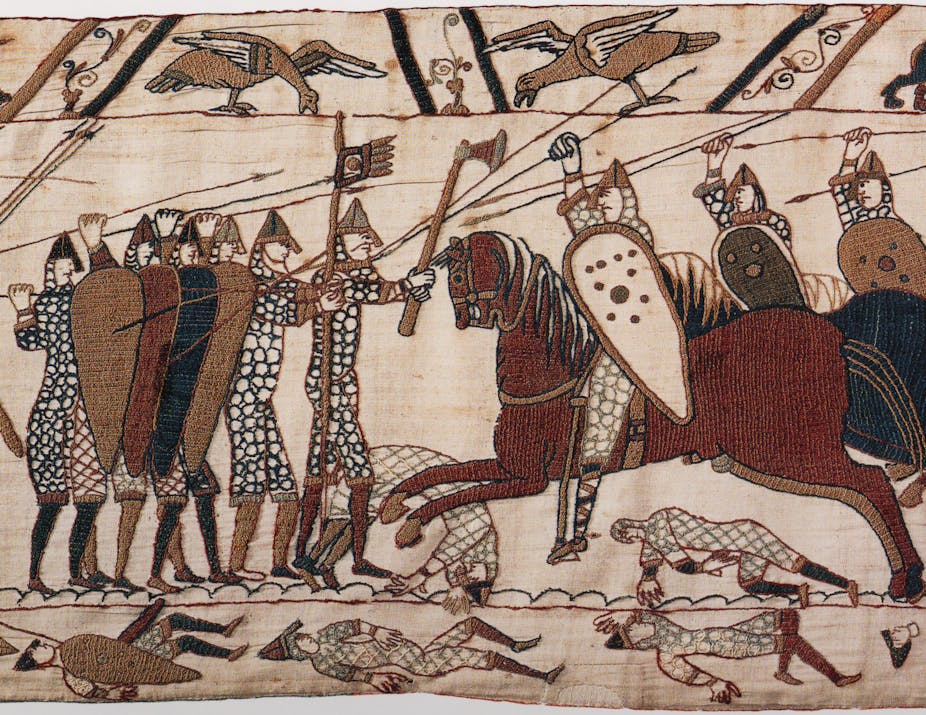The possible discovery of the site of a 1069 “sequel” to the Battle of Hastings is a reminder that the Norman Conquest wasn’t just a case of 1066 and all that. In fact William the Conqueror faced repeated threats to his power from both inside and outside the kingdom during his reign.
Writer Nick Arnold claims to have identified the site of a battle in 1069 which marked the last major attempt of Godwine and Edmund, the sons of the Anglo-Saxon king Harold Godwinson, to regain power following their father’s defeat at the Battle of Hastings in 1066. Historical sources tell us that the 1069 encounter took place at the mouth of the River Taw in North Devon and, by combining this with scientific data, Arnold has narrowed down the location to a spot between Appledore and Northam. While an interesting piece of historical detective work in its own right, the potential identification of this site is a reminder that the Norman Conquest took years, not days.
Challenges to William’s rule
Admittedly, in the history of medieval military encounters, the Battle of Hastings was unusually decisive. This hard-fought battle resulted in the deaths of King Harold and a large portion of the English aristocracy. With the removal of much of the ruling elite, William the Conqueror and his Norman allies (in reality a mixture of men drawn from various regions of France and Flanders) took over the controls of a remarkably centralised Anglo-Saxon state.
But it would be wrong to think that the Norman Conquest ended there. While much of the population probably accepted that the country was, in effect, under new management, not everyone welcomed the change. The late 1060s and 1070s saw significant challenges to William’s rule in England, of which the attempted invasion by King Harold’s sons in 1069 was just one.
Our most reliable witness to events at this time, the Anglo-Saxon Chronicle, tells us that in 1069 “Harold’s sons came from Ireland at midsummer with sixty-four ships into the mouth of the Taw”. The naval force mentioned was almost certainly supplied by the Norse kingdom of Dublin and reflects previous ties between King Harold and Dublin’s overlord, King Diarmait of Leinster.
This was the second attempt by Harold’s sons to mount an invasion and the second time that they had targeted the south-west. In 1068 they had attacked Bristol and ravaged Somerset, before being seen off by English forces under Eadnoth the Staller, who was killed in the encounter. They were repelled again in 1069, this time by a Breton lord, Count Brian, who seems to have taken over responsibility for defence of the area.
‘Harrying of the North’

The brief return of the Godwinsons in 1069, however, was a mere sideshow compared to the full-scale rebellion in the north later that year. This was led by English earls in support of Edgar the Ætheling, who claimed the throne as the closest male relative of William and Harold’s predecessor, Edward the Confessor. Like the attempted invasion by Harold’s sons, this rebellion was made possible through an alliance with a foreign power: in this case, King Sweyn of Denmark, who provided a fleet of 240-300 ships. William’s response was to gather his army and “utterly ravage and lay waste” to the region in what became known as the Harrying of the North, forcing the northern earls into a truce.
The Danes, meanwhile, remained a disruptive force in England until the following summer, when they left laden with plunder largely taken from the abbey at Peterborough. All of which underlines that the events playing out in England were part of political struggles in the context of her European neighbours. For the Normans, conquest was an ongoing campaign that lasted years, not something that was handed to them by virtue of Harold’s death at Hastings.
Battleground England
Although Arnold’s purported discovery of the 1069 battle site can be admired as an ingenious piece of detective work, only archaeologists will be able to prove his claims. In reality, this announcement adds only a limited amount to our current knowledge of historical events, which means any identification of the site in which the Godwinsons made their last great bid for power is probably of more significance to a local audience than to a national or academic one.
But if anything it should remind us of the turbulent years after 1066, when the Norman conquest was by no means assured – and it seemed as if Hastings’ immediate legacy had been to turn England itself into a battleground.

